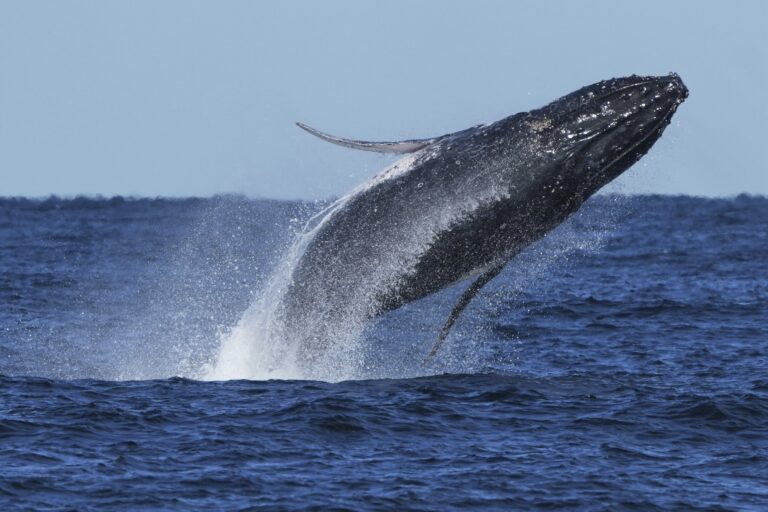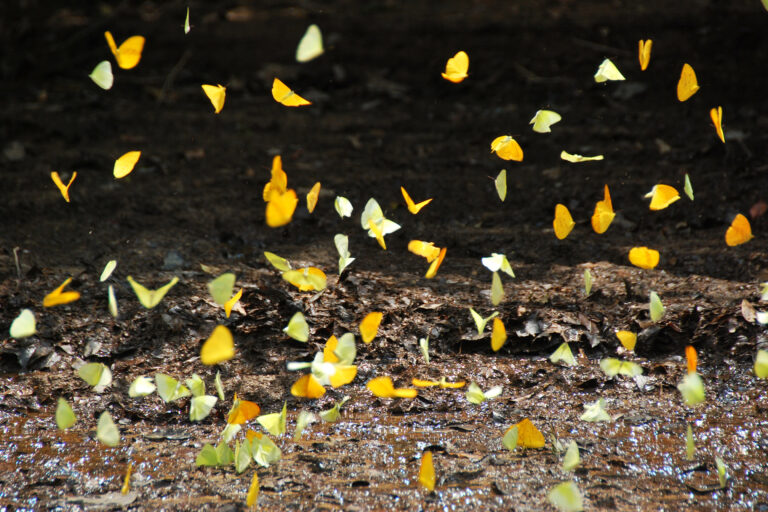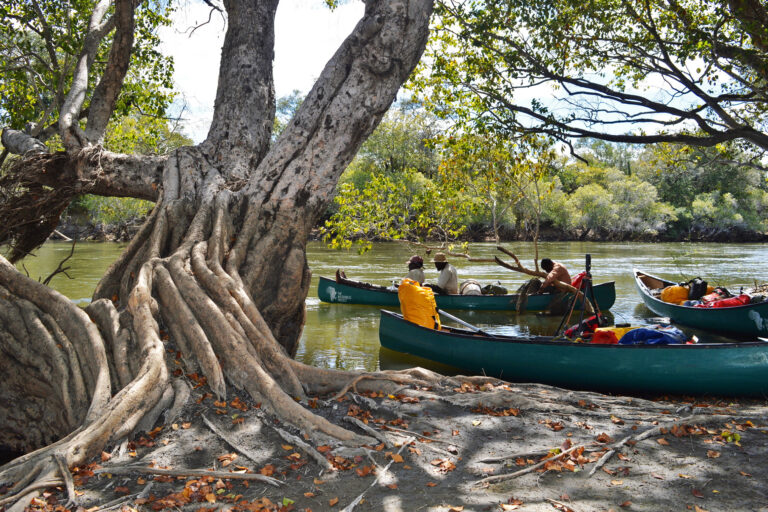- Fishing lines and nets pose the most significant threat to the survival of young white sharks in the waters off Mexico and southern California, according to a new study.
- A team of scientists used a relatively “untapped” but ubiquitous storehouse of data to develop a statistical model for the survival rates of juvenile white sharks.
- The researchers calculated that 63 percent of young white sharks living in this part of the Pacific survive annually, but that nearly half probably come in contact with gillnets set by commercial fishers.
- The findings point to best practices, such as barring gillnets from inshore “nurseries” and asking fishers to check their nets for trapped sharks more regularly, that could help protect great whites.
Fishing nets and lines kill more young white sharks living near Mexico and southern California than any other cause of death, a new study has found.
A team of researchers led by ecologist John Benson used a relatively “untapped” but ubiquitous storehouse of data to help answer a question that scientists have about great whites (Carcharodon carcharias) as well as other sharks and marine species.
“To our knowledge, our study is the first to provide an estimate of annual juvenile survival rate based on satellite tracking of individual sharks,” Benson, formerly at the Monterey Bay Aquarium in California and now with the University of Nebraska, told Mongabay in an email. The researchers published their work May 9 in the Journal of Applied Ecology.

Shark scientists have been tracking the movements of white sharks with pop-up archival satellite, or PAT, tags for years. But until now, researchers hadn’t leveraged that information to figure out how many young sharks survive from year to year.
“Because the PAT tags record detailed data on temperature and diving, it is possible to reconstruct the fate of the shark in the final minutes of each track,” Salvador Jorgensen, a biologist with the Monterey Bay Aquarium in California and co-author of the paper, said in a statement. “We’ve looked at these data for years and often noted when a tag ended up on a fishing boat or in the stomach of a larger predator.”
Benson drew on his experience with land animals such as mountain lions, wolves and moose to apply a statistical technique called “known-fate” modeling to these data, harvested from tags attached to 37 white sharks between 2000 and 2016, to come up with survival estimates.
The team estimated that about 63 percent of young white sharks living in this part of the Pacific survive annually. They also estimated that almost half of the region’s young white sharks probably have run-ins with gillnets set by commercial fishers, and that ending up as bycatch is the most common cause of death at this stage of the sharks’ lives.

Those revelations, along with other findings — that bigger sharks are less apt to get caught in gillnets, for example — provide insight into what scientists, fisheries managers and policymakers can do to protect one of the ocean’s premier predators, recently listed as vulnerable by the IUCN.
The team’s results point to the critical role that fishers play and why any such efforts should include them.
“It’s the best way to go,” Oscar Sosa-Nishizaki, a co-author and biological oceanographer at the Ensenada Center for Scientific Research and Higher Education in Mexico, said in the statement. “Mexican fishing communities play a vital role in enabling this research as well as helping us solve any issues as they arise.”
By unspooling their nets outside “nursery areas” near the shoreline, fishers can avoid the smallest, most vulnerable sharks, Benson said. And if they check their nets regularly, they’ll free a lot of trapped sharks before the entanglement kills them.
He added that California’s ban on gillnets within 3 nautical miles (5.6 kilometers) of shore seems to have cut down on white shark bycatch. Three of the study’s four sharks tagged in Mexico, which does not have a similar gillnet ban, died in nets or on longlines. Benson said that data from ongoing research there would help inform more definitive conclusions about the comparative dangers that white sharks face in each country’s territorial waters.

And the reach of this study doesn’t have to stop there. The methods used in this study could help decode the survival rates of other ocean-going species, along with the threats they face, Benson said, just by making of use of the data from similar PAT tags on other marine animals.
“What was especially exciting to us with this research,” Benson said, “is that our results have important implications for the white shark population we are studying, but also for the entire field of marine ecology.”
Banner image of a white shark in South Africa by Rhett A. Butler/Mongabay.
John Cannon is a Mongabay staff writer based in the Middle East. Find him on Twitter: @johnccannon
Citation
Benson, J. F., Jorgensen, S. J., O’Sullivan, J. B., Winkler, C., White, C. F., Garcia Rodriguez, E., … Lowe, C. G. (2018). Juvenile survival, competing risks, and spatial variation in mortality risk of a marine apex predator. Journal of Applied Ecology.
FEEDBACK: Use this form to send a message to the author of this post. If you want to post a public comment, you can do that at the bottom of the page.














